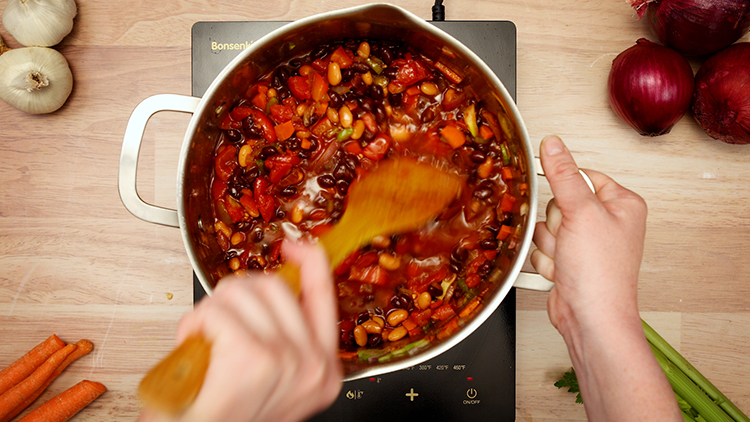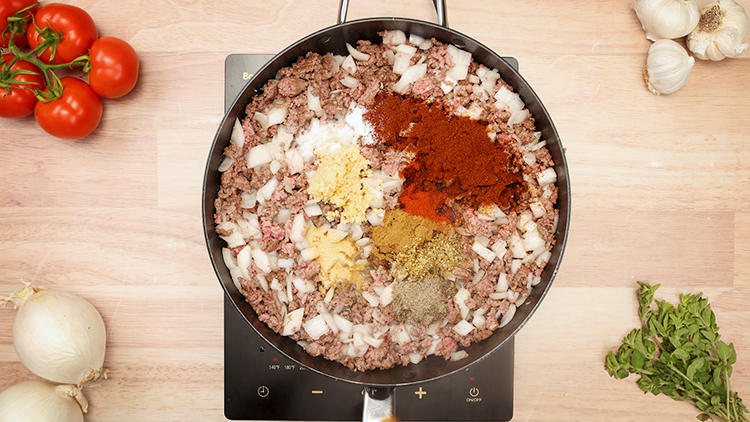Chili is a beloved comfort food for many, offering warmth and flavor with each spoonful. However, even the most experienced cooks can sometimes go overboard with seasoning, leaving their chili too salty, spicy, or otherwise overpowering. But fear not! There are several effective strategies to salvage your over-seasoned chili and turn it into a delicious dish everyone will enjoy. In this comprehensive guide, we’ll explore various methods to rescue your chili and bring balance back to its flavor profile.
Before diving into corrective measures, it’s essential to assess the specific issue with your over-seasoned chili. Is it too salty, too spicy, or perhaps both? Understanding the primary problem will guide your approach to fixing it effectively.
Reducing Saltiness

Dilution Method
Diluting the chili with additional ingredients is one of the simplest and most straightforward ways to reduce saltiness. By adding more volume to the dish, you effectively spread out the salty flavor, making it less intense. Consider incorporating extra beans, vegetables, or broth to dilute the saltiness without compromising the overall flavor profile of the chili. This method not only helps to balance the taste but also increases the yield of your chili, making it suitable for larger gatherings or leftovers.
Acidic Ingredients
Introducing acidic ingredients into the chili can help counteract the saltiness by providing a contrasting flavor profile. Tomatoes, whether fresh or canned, are a classic addition to chili and can help balance out the saltiness with their natural acidity. Similarly, a splash of vinegar or citrus juice, such as lime or lemon, can help cut through the saltiness and brighten up the dish. When using acidic ingredients, it’s essential to add them gradually and taste the chili as you go to achieve the desired balance of flavors.
Potato Trick
The potato trick is a clever method for reducing saltiness in chili while maintaining its texture and flavor. Simply peel and dice a few potatoes and add them to the chili while it simmers. The potatoes act as sponges, absorbing excess salt from the dish as they cook. Once the potatoes are tender, remove them from the chili before serving. Not only does this method effectively reduce saltiness, but it also adds an additional layer of complexity to the chili’s texture, making it heartier and more satisfying.
Sugar Addition
While it may seem counterintuitive, adding a small amount of sugar to your chili can help balance out the saltiness and enhance its overall flavor. Brown sugar, honey, or maple syrup are excellent choices for this purpose, as they add sweetness without overpowering the dish. Start with a teaspoon of sugar and adjust according to taste, being careful not to add too much and make the chili overly sweet. The subtle sweetness will complement the savory flavors of the chili, resulting in a more harmonious taste experience.
Experimentation and Adjustment
Reducing saltiness in chili often requires a bit of experimentation and adjustment to find the perfect balance of flavors. As you implement these methods, it’s essential to taste the chili frequently and make adjustments accordingly. Remember that it’s easier to add ingredients than to remove them, so proceed gradually until you achieve the desired taste. By carefully balancing saltiness with other flavors and ingredients, you can rescue your chili from being overly salty and transform it into a delicious and satisfying dish that everyone will enjoy.
Taming Spiciness

Dairy Products
Dairy products such as sour cream, yogurt, or cheese are well-known for their ability to mellow out spicy flavors. The fats and proteins in dairy help to counteract the heat of the chili, providing relief to your taste buds. Stirring in a dollop of sour cream or yogurt into the chili can add a creamy texture while reducing the intensity of the spiciness. Similarly, sprinkling grated cheese over the chili before serving can help temper the heat and add richness to the dish. Experiment with different dairy products to find the perfect balance of creaminess and flavor.
Acidic Ingredients
Incorporating acidic ingredients into your chili can help neutralize the spiciness and add depth to the flavor profile. Citrus juices such as lime, lemon, or orange can provide a refreshing contrast to the heat of the chili. Similarly, a splash of vinegar, whether white, apple cider, or balsamic, can help balance out the spiciness and enhance the overall taste of the dish. When using acidic ingredients, start with a small amount and gradually increase to achieve the desired level of acidity without overpowering the chili’s flavor.
Starches and Carbohydrates
Adding starches or carbohydrates to your chili can help absorb some of the heat and provide a comforting balance to the spiciness. Consider incorporating cooked rice, quinoa, or pasta into the chili to dilute the heat and add texture to the dish. Potatoes, whether diced and added directly to the chili or served as a side dish, can also help tame the spiciness and provide a satisfying element to the meal. Experiment with different starches and carbohydrates to find the combination that works best for your taste preferences.
Nut Butters
High-fat ingredients like nut butter, such as peanut or almond butter, can help mitigate the intensity of spicy flavors in chili. The natural oils and proteins in nut butter help to coat the tongue and reduce the sensation of heat, providing relief from the spiciness. Stirring in a spoonful of nut butter into the chili can add richness and creaminess while balancing out the heat. Experiment with different types of nut butter to find the flavor profile that complements your chili best.
Experimentation and Adjustment
Taming spiciness in chili often requires a bit of experimentation and adjustment to achieve the perfect balance of flavors. As you implement these methods, be sure to taste the chili frequently and make adjustments accordingly. Remember that everyone’s tolerance for spiciness is different, so it’s essential to tailor the heat level to your own preferences. By carefully balancing spiciness with other flavors and ingredients, you can transform your overly spicy chili into a delicious and satisfying dish that everyone will enjoy.
Combating Both Saltiness and Spiciness

Dilution and Adjustment
One of the most effective approaches to tackling both saltiness and spiciness in chili is through a combination of dilution and adjustment methods. By gradually diluting the chili with additional non-spicy ingredients and simultaneously incorporating ingredients that help counteract both saltiness and spiciness, you can achieve a harmonious flavor profile.
Adding Non-Spicy Ingredients
Start by incorporating extra beans, vegetables, or broth to dilute the saltiness of the chili. This not only helps to spread out the salty flavor but also increases the volume of the dish, making it suitable for larger servings or leftovers. Consider adding ingredients like diced tomatoes, bell peppers, onions, or carrots to enhance the chili’s texture and flavor while reducing the intensity of both saltiness and spiciness.
Dairy Products and Acidic Ingredients
Simultaneously, incorporate dairy products like sour cream, yogurt, or cheese to help mellow out the spiciness of the chili. The fats and proteins in dairy coat the tongue and provide relief from the heat, while the acidity in ingredients like lime juice or vinegar helps neutralize both saltiness and spiciness. Experiment with different combinations of dairy and acidic ingredients to find the right balance of creaminess and acidity for your chili.
Starches and Carbohydrates
Adding starches or carbohydrates to the chili can further help absorb excess salt and dilute the spiciness. Consider incorporating cooked rice, quinoa, or pasta into the chili to provide a comforting base while balancing out the flavors. Potatoes, whether diced and added directly to the chili or served as a side dish, can also help absorb excess salt and provide a satisfying element to the meal.
Nut Butters and Sweeteners
To add complexity and depth to the chili while mitigating both saltiness and spiciness, consider incorporating ingredients like nut butter and sweeteners. High-fat nut butter, such as peanut or almond butter, can help coat the tongue and reduce the sensation of heat, while sweeteners like brown sugar, honey, or maple syrup can help balance out the flavors and add richness to the dish. Experiment with different combinations of nut butter and sweeteners to achieve the desired taste profile.
Taste Testing and Adjustment
Throughout the process of combating both saltiness and spiciness in chili, it’s essential to taste the dish frequently and make adjustments accordingly. Remember that everyone’s taste preferences are different, so be sure to tailor the seasoning to your own liking. By carefully balancing the flavors and textures of the chili, you can transform an overly salty and spicy dish into a delicious and satisfying meal that everyone will enjoy.
Conclusion
While over-seasoned chili may initially seem like a culinary mishap, it presents an opportunity to get creative in the kitchen and rescue the dish with clever solutions. Whether it’s reducing saltiness, taming spiciness, or addressing both issues simultaneously, there are plenty of techniques to salvage your chili and transform it into a crowd-pleasing meal. With a bit of experimentation and patience, you can turn your over-seasoned chili into a flavorful masterpiece that will leave everyone craving for more.


